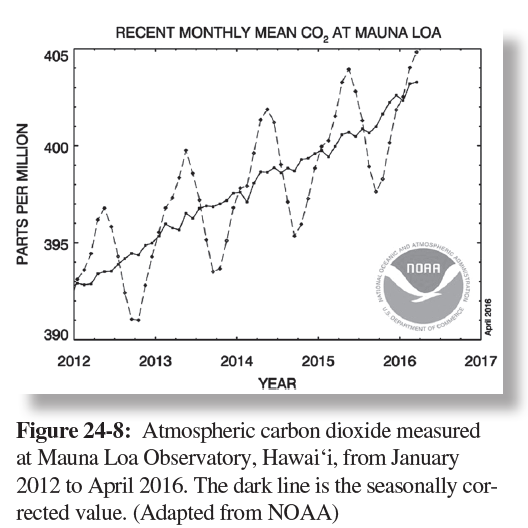How are hydrogen isotopes used to infer polar temperature records?
What will be an ideal response?
Ice cores can be used to estimate past surface temperatures by looking at oxygen or hydrogen isotopes. By analyzing the isotopic composition of frozen water-ice in polar ice cores, we can learn something about the local temperature at the time the ice formed. Warmer water temperatures speed up the evaporation rates of both H2O and HDO. HDO represents water molecules that contain deuterium. Warmer temperatures correspond to a higher HDO content in the snow that falls over Antarctica and in the ice that forms from the snow.
You might also like to view...
Which of the following molecules would you expect to be the least attracted to a Na+ ion?
A. F- B. H-F C. Cl2CH2 D. HO- E. H3C-CH3
Which city exhibits the greatest precipitation variability? Why?
The question is based on Figure 24-8, charts showing annual precipitation in Tucson, Arizona, and Bozeman, Montana, from 1905 to 2015.

What will be an ideal response?
True or False: Both the Neptunist Doctrine and the Vulcanist Doctrine included parts that were later proven to be true
Indicate whether this statement is true or false.
What is a structure formed by the upward arching of layers called?
a. monocline b. syncline c. anticline d. Patsycline e. formation